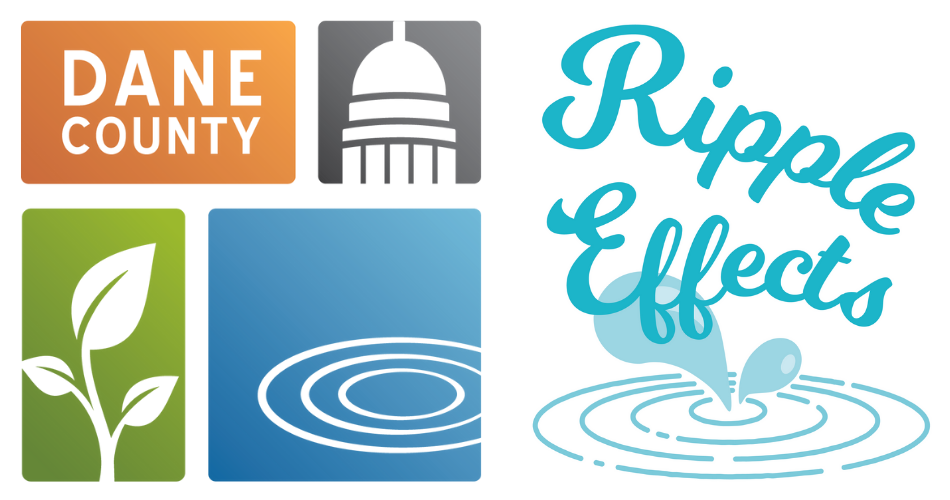
Our actions on land have a huge impact on our local lakes, rivers and streams; it’s all connected. Learning about stormwater, how it moves, where it ends up, and taking actions to help keep it as clean as possible is the key to protecting our waters.
Stormwater runoff is rainwater or snow melt that runs off hard surfaces such as rooftops, roads, driveway, parking lots and even lawns into ditches and storm drains.
When stormwater runoff washes over hard surfaces it carries pollutants like soil, chemicals, gasoline, trash, fertilizers and leaves with it to our storm drains. Those storm drains are connected to large underground pipes called storm sewers that eventually end up emptying into our local waterways.
In Dane County and across much of Wisconsin, stormwater runoff does not get treated before it enters our waterways. This is different than the water that is flushed down your toilet or goes down the drain in your shower which flows down a separate sewer system called a sanitary sewer system and gets treated at a wastewater treatment plant before it’s released to local waters. In some areas, stormwater runoff may flow to a stormwater pond where some of the soil settles out prior to traveling to a local lake or stream, but for the most part whatever enters the storm drain ends up in our waters.
Anything that can be harmful to our waters and transported via stormwater can potentially be a source of stormwater pollution. Things like lawn chemicals, trash, gasoline, oil, and road salt are common pollutants. Other, “more natural” sources that people don’t often think about as pollutants include leaves, soil and grasses. These sources contain a nutrient called phosphorus and when too much phosphorus washes into our lakes and rivers it can lead to algal blooms that are not only harmful to fish, but also to humans and pets.
Taking actions that keep rain where it lands and only rain in the storm drain can not only help keep our lakes, rivers and streams clean, but also prevent localized flooding. Visit our “Get Involved” section to learn about simple actions you can take to project our waters.
Check out the video below to learn more about how water moves across our landscape and how it picks up pollution along the way.